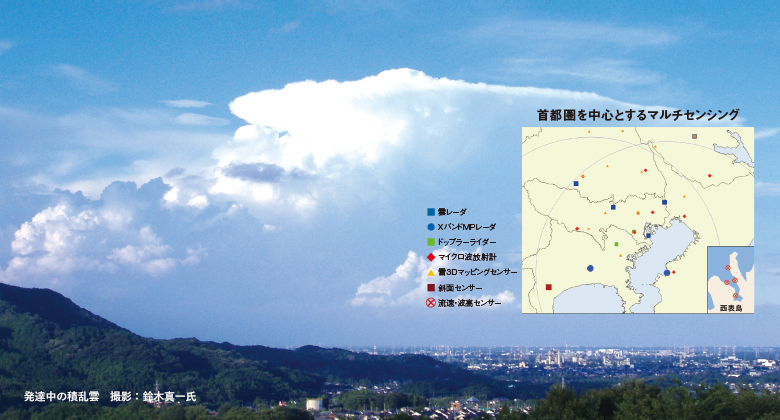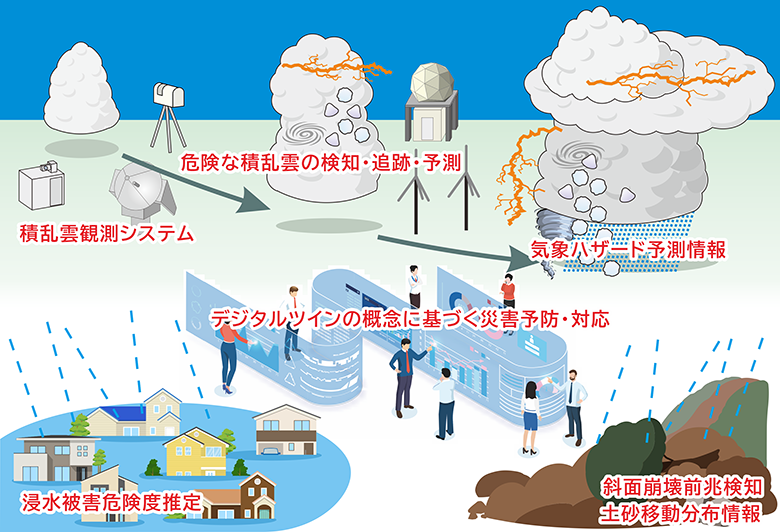Research and development on monitoring and forecasting techniques for mitigating weather-related disasters
Strengthening of resilience to extreme weather events

According to recent research on climate change, there is a high probability that the frequency of heavy rain will increase in the future. In fact, in recent years, the frequency of short-duration intense rainfall events has been increasing; damage from floods and landslides has become more frequent and severe. Under this circumstance, in order to strengthen society's resilience to extreme weather events such as heavy rain, it is necessary to improve monitoring and forecasting techniques to mitigate weather-related disasters, and to develop information products to be useful for disaster responses. This research project will aim to mitigate weather-related disasters through the development and utilization of information products.

(Based on the Digital Twin concept from the technologies and information in the figure, we will create information products that will optimize disaster response and contribute to mitigation of wind and flood damage)
Detection, tracking, and forecast of dangerous cumulonimbus clouds
Extreme weather events such as band-shaped heavy rainfall areas (Senjo-Kousuitai) that cause extensive damages, localized heavy rainfall, tornadoes, hail, and lightning strikes occur associated with well-developed cumulonimbus clouds. Since a single cumulonimbus cloud is only a few kilometers in size and has a lifespan of around an hour, it is not possible to predict the location and time of occurrence of cumulonimbus clouds and the extreme weather they bring with them using conventional weather forecasting methods. Prediction of cumulonimbus clouds requires observations that can identify preliminary signs of their development, numerical weather prediction that can resolve cumulonimbus clouds, and data assimilation that can appropriately integrate observation data into the numerical weather prediction. NIED has developed technologies for detecting cumulus clouds in the stage before they develop into cumulonimbus clouds (cloud radar) and technology to assimilate cloud-scale observation data into numerical weather predictions. In addition to the technologies, this project will conduct research to produce more advanced weather forecast information through observation technology that can detect lightning discharges other than lightning strikes, as well as through the improvement of numerical weather predictions.
Development of information products for mitigation of flood damage and landslide disasters
We will develop an efficient and accurate method to estimate flood damage risk by using a probabilistic approach to extract flood-prone river basins from rainfall prediction information generated by this research. By using this method, we will also develop a system for flood risk assessment and triage to be useful for both responses just after disaster occurrence and preparedness.
In addition, for landslide disasters, there is currently a lack of information to support the activity of disaster response personnel. In this research, we will conduct field observations and experiments using the large-scale rainfall simulator that is a facility with the world's largest rainfall area and sprinkling capacity, and make information to support disaster response by upgrading observation technology that can effectively and early detect the precursor phenomena of slope failure. Furthermore, we will develop technology to quickly generate information on the location and scale of landslides that occur over a wide area using satellite data, etc.
